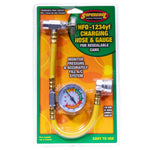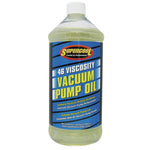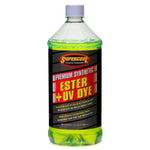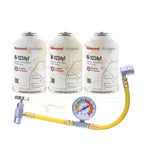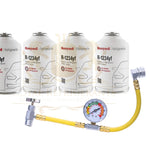You have no items in your shopping cart.
As technology evolves, so do the refrigerants used in home air conditioning systems. Choosing the right house AC refrigerant in 2025 is crucial for efficiency, environmental sustainability, and long-term performance. In this comprehensive guide by Royal Refrigerants, we’ll explore what makes a refrigerant good for your house AC, from its cooling efficiency to environmental impact and compatibility with modern systems.
What Makes a Good House AC Refrigerant?
A good house AC refrigerant should provide optimal cooling, operate efficiently, and have minimal impact on the environment. In recent years, refrigerants with low global warming potential (GWP) have become essential in meeting both environmental and regulatory requirements. Here, we break down the key factors to consider when choosing a refrigerant for your home air conditioning system.
High Efficiency for Cost-Effective Cooling
Efficiency is one of the most important factors that make a house AC refrigerant a good choice for homeowners. A highly efficient refrigerant ensures that your air conditioning system operates at optimal performance, cooling your home quickly without consuming excessive energy. Refrigerants like R410A and R32 are designed to perform well in varying climate conditions, making them ideal for home cooling needs. These refrigerants have superior thermodynamic properties compared to older refrigerants like R22, meaning they are better at absorbing and releasing heat, leading to faster and more efficient cooling.
When you choose a highly efficient refrigerant, your air conditioning system doesn’t have to work as hard to cool the air, which reduces the overall energy consumption. This translates to lower energy bills over time, as your AC will consume less power to reach the desired temperature. Additionally, these energy-efficient refrigerants reduce the strain on your system, which can extend its lifespan. Regular maintenance and proper refrigerant charge can ensure that your system continues to operate at peak efficiency, ensuring long-term cost savings.
Environmental Sustainability: Low GWP Refrigerants
In 2025, environmental sustainability is at the forefront of refrigerant selection. House AC refrigerants with a lower global warming potential (GWP) are gaining popularity as part of efforts to combat climate change. High-GWP refrigerants, like R22, contribute significantly to global warming and ozone depletion. As a result, they are being phased out in favor of more environmentally friendly alternatives.
Refrigerants like R32 and R410A are designed to have much lower GWP values compared to older types. These refrigerants help reduce the environmental footprint of air conditioning systems while still providing excellent performance. As governments and regulatory bodies continue to tighten restrictions on high-GWP refrigerants, opting for sustainable options is a wise choice for homeowners looking to future-proof their systems.
Common Types of House AC Refrigerants in 2025
Several house AC refrigerants are popular in 2025, each offering distinct advantages in terms of efficiency, environmental impact, and system compatibility.

Let’s look at the most common refrigerants currently used in home cooling systems.
R410A: A Reliable Choice for Modern Systems
R410A refrigerant has become one of the most common refrigerants for house AC systems since its introduction in the late 1990s. It is known for its reliability and efficiency. Unlike R22, which is now phased out due to its harmful impact on the ozone layer, R410A offers a safer and more sustainable alternative. This refrigerant has a higher pressure and better thermal properties, which results in better heat transfer and greater efficiency. R410A is also non-ozone-depleting and works well with energy-efficient systems, making it an ideal choice for new air conditioning installations.
Despite its advantages, R410A does come with some challenges. For instance, it operates at higher pressures than older refrigerants, which means that systems using R410A require specialized equipment and installation procedures. However, these slight challenges are far outweighed by its long-term benefits, such as lower energy consumption and minimal environmental impact. Homeowners who choose R410A can expect superior cooling performance, reduced energy consumption, and a system that adheres to modern environmental standards.
R32: The Next Generation of Efficient and Green Refrigerants
R32 is quickly emerging as a highly efficient and environmentally friendly house AC refrigerant. With a significantly lower GWP than R410A, R32 has become the refrigerant of choice for many manufacturers in 2025. It offers excellent energy efficiency, which leads to lower energy consumption and reduced operating costs.
R32 refrigerant also has a lower flammability compared to other alternatives, making it a safer option for home use. Additionally, it has a minimal environmental impact, making it a favorite among homeowners and builders focused on sustainability. However, R32 is typically used in newer systems, and retrofitting older systems may require significant modifications.
How to Choose the Best House AC Refrigerant for Your System
Selecting the right house AC refrigerant isn’t just about efficiency and environmental impact; it’s also important to consider system compatibility.

Not all refrigerants can be used in all systems, so it’s essential to make the right choice based on your AC model and the refrigerant it was designed for.
Compatibility with Existing AC System
When considering a refrigerant upgrade, it’s essential to evaluate the compatibility of your current house AC system with the new refrigerant. Older systems, particularly those that still use R22, may not be able to accommodate newer refrigerants like R410A or R32 without modifications. R22 was a popular refrigerant for many years, but its ozone-depleting properties led to its phase-out under global environmental agreements.
To switch from R22 to a more modern refrigerant like R410A or R32, the system must be retrofitted, which may involve replacing certain components like valves, compressors, and hoses to handle the higher pressures associated with these newer refrigerants. This retrofit process can be costly, and in some cases, it may be more economical to replace the entire system with a more modern unit designed for R410A or R32.
For homeowners with newer systems, the transition to R410A or R32 can often be made without extensive modifications. However, it’s always a good idea to consult with a qualified HVAC technician to ensure that your system is compatible with the refrigerant you intend to use. They can assess the system and provide guidance on the most cost-effective way to proceed with the upgrade.
Cost Considerations: Upfront Investment vs. Long-Term Savings
Another crucial factor to consider is the overall cost of upgrading to a new house AC refrigerant. While switching to a more efficient refrigerant like R410A or R32 may come with a higher upfront investment, the energy savings over time can offset these costs. These refrigerants are designed to maximize the energy efficiency of your AC unit, reducing long-term operating expenses.
It’s also important to factor in the cost of installation, particularly if your system requires modifications or replacement. Speak to an HVAC professional to get a clear estimate of how much it will cost to upgrade your refrigerant and whether the investment makes sense for your home.
Additional Considerations for Selecting the Right Refrigerant
Beyond efficiency, environmental impact, and compatibility, there are a few other factors to keep in mind when choosing the best house AC refrigerant for your home.

System Longevity and Maintenance
A good house AC refrigerant should not only improve cooling performance but also contribute to the long-term durability and reliability of the air conditioning system. Refrigerants like R410A and R32 are specifically designed to work with modern air conditioning units, reducing wear and tear on system components. By using a refrigerant that is optimized for your system’s pressure and temperature ranges, you help ensure that your AC operates efficiently over the years, leading to fewer repairs and a longer lifespan for the system.
Regular maintenance is also essential for preserving the longevity of your AC system. This includes checking refrigerant levels, inspecting for leaks, and replacing filters to keep airflow optimal. Proper maintenance also ensures that the refrigerant charge remains balanced, which is crucial for maintaining the system's efficiency. An HVAC technician can perform routine check-ups to ensure that the refrigerant remains at optimal levels and that no issues are affecting the performance of your air conditioning system.
Environmental Regulations and Future-Proofing
As more countries adopt stringent environmental regulations, the refrigerants of the future will continue to evolve. When selecting a house AC refrigerant, it’s essential to consider both current and future regulations. R410A is still widely used, but refrigerants like R32 are rapidly gaining popularity for their superior environmental benefits.
By choosing a refrigerant with a lower GWP and minimal environmental impact, homeowners can ensure that their cooling systems remain compliant with future regulations and contribute to global sustainability goals.
FAQs
1. What is the best refrigerant for home air conditioners in 2025?
R32 and R410A are the most popular house AC refrigerants in 2025 due to their high efficiency and lower environmental impact compared to older options like R22.
2. Can I replace R22 refrigerant with R410A?
While it is possible, R410A is not directly compatible with older systems designed for R22. A retrofit is required, which may involve changes to the system’s components and pressure settings.
3. How long does an AC refrigerant last?
AC refrigerant generally lasts for many years, but it can leak over time. If your AC is losing refrigerant or not cooling effectively, it may indicate a leak that needs repairing.
4. What does GWP stand for, and why does it matter?
GWP stands for Global Warming Potential. It measures how much a refrigerant contributes to global warming. Lower-GWP refrigerants are more eco-friendly and are increasingly favored by manufacturers.
5. Why should I upgrade my refrigerant?
Upgrading your refrigerant to a more efficient and environmentally friendly type can save on energy bills, improve cooling performance, and ensure your system complies with future regulations.
Conclusion
In 2025, selecting the right house AC refrigerant is crucial for efficiency, environmental impact, and cooling performance. Modern refrigerants like R410A and R32 offer better energy efficiency and are more eco-friendly compared to older options.
At Royal Refrigerants, we provide high-quality refrigerants that meet both performance and environmental standards. Whether you're replacing or upgrading your AC system, our products can help improve your home’s comfort and reduce your energy costs. Contact us today to find the best refrigerant for your needs.
 English
English

